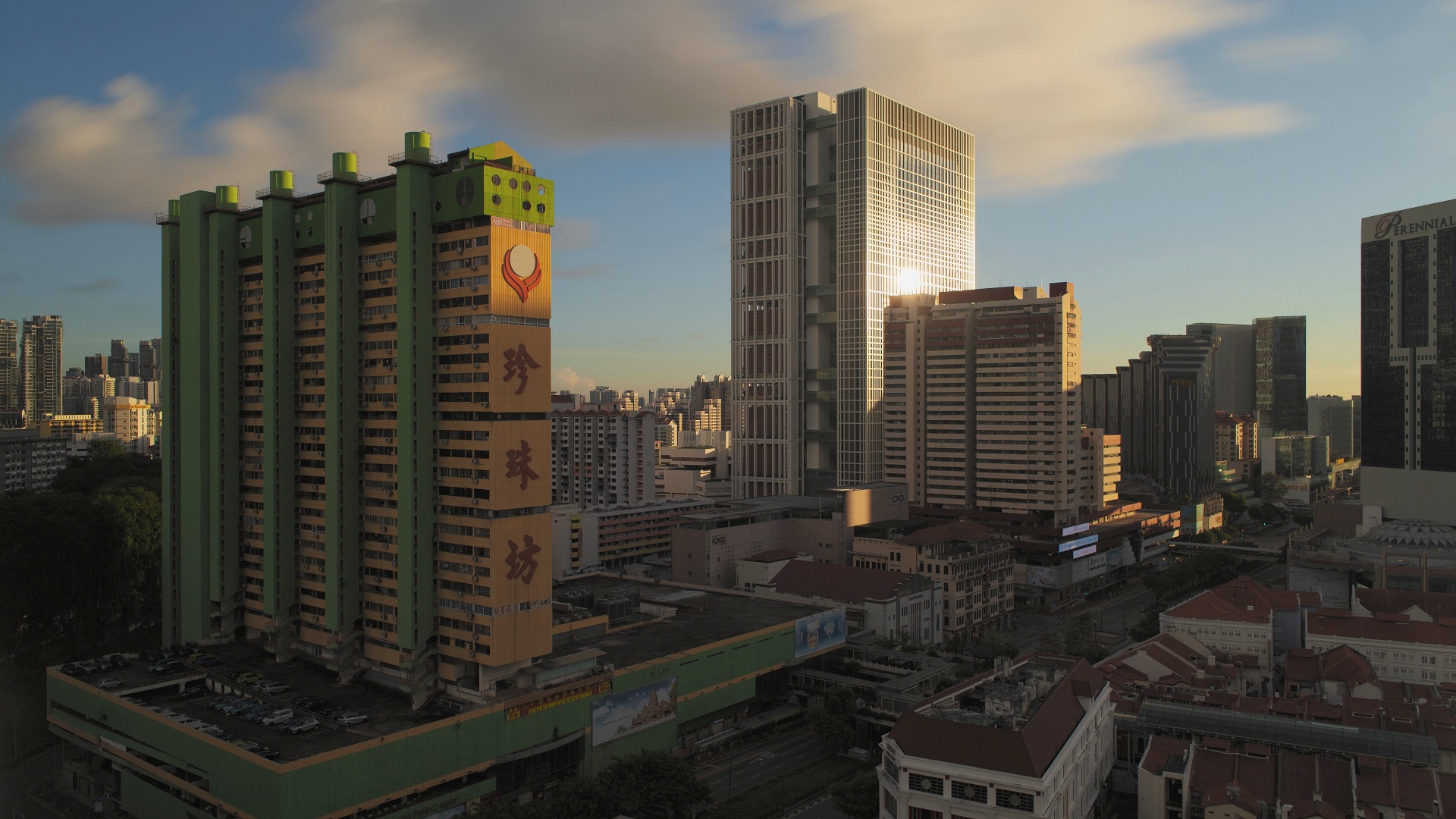Over a thousand stairs. A hundred buildings. Eight years.
That’s what it took Australian filmmaker Keith Loutit to capture the evolution of Singapore’s ever-changing skyline, from the demolition of the Pearl Bank Apartments to the construction of landmarks such as Marina Bay Sands, into a timelapse-like sequence comprised of more than 3,000 photographs.
The 46-year-old Singapore resident even climbed enough stairs to ascend eight of Dubai’s Burj Khalifa – the world’s tallest building – to painstakingly capture photos from vantage points including stairwells and fire escapes. That effort pays off in the stunning Lion City Rising, the third installment to hit YouTube in his video series called The Lion City Project.
“The motto of this film is that when you walk past or pass by landscapes, they seem like they are fixed in time but what’s really happening is that they are changing around us constantly, just showing the people the wonder of what’s happening just by showing a different timescale,” he said.
“Architecture in Singapore has something for everyone, but my main interest is in Singapore’s constant renewal and reinvention. Singapore has little space for the city to sprawl, so it often has to demolish something before it can build anew. It’s sad because we lose icons like the Pearl Bank Apartments, but we get to see new exciting new buildings appearing every year.”
The cylindrical Pearl Bank residential apartment was demolished in March, 44 years after it was built, to make way for new condominiums.
Loutit, who works solo, previously gained fame in 2008 for his Bathtub series of short films transforming parts of Sydney to appear like miniature figurines. In Singapore, he said that he climbed over 1,300 flights of stairs and personally went down to site locations more than 1,500 times.
“With the story I want to tell with Singapore growing, the idea I had was to speed up time so much that it really felt like you were experiencing life in a different way,” he said.
Making the buildings come alive
Loutit said he has a unique tactic for creating the video which did not require placing cameras across Singapore and leaving them recording, as usual timelapse methods would have been “extraordinarily” expensive and impractical.
Instead, Loutit ventures out with only one camera to shoot the same sites nearly every sunny day, or at least once a month. He had also built a camera attachment that helps him align his shots perfectly at each location and capture different angles.
“It’s a rig which sits as part of the camera support and I can go back to the location and get a shot that I shot yesterday, a week, a month or a year ago which means I could also do some interesting things like moving the camera up or across buildings,” he said. “It feels like the audience is coming on for a ride and it adds to the whole production value having motion in the footage.”

To create moving shots in which the camera rises with a building’s construction or down with its demolition, he shoots from different heights each time. It took a total of 20 to 30 visits to form a single completed shot.
“So what I would do is I would start at the top of the building and I would, for example, start shooting at level 40 and go down to 39 to 38, and the next time of visit, I’ll start one level lower and climb down three stories,” he said. “So it’s like layering and building that jigsaw puzzle and pieces of the shot.”
The daytime shots are edited to look natural and night shots to look more futuristic with light trails from the traffic a la Tron or Blade Runner.
Singapore’s unpredictable weather made things tough.
“It can be frustrating, there can be times when you really need to get a shot but you have 7 or 14 days of bad weather. Then, when you finally have good weather, you have so many shots to collect,” he said.
Committing to a yearlong production is pressure to “get the next shot” despite frustrations.
”The motivation to keep going is based on the sheer amount of being invested on the project,” he said.
Loutit hopes to continue expanding the Lion City project using slightly different styles, perhaps with lesser-known buildings.
“I think this project has the potential to expand but I do think there are diminishing returns in four more years of footage to make a 12-year or a 16-year film … I’ll be shooting fewer buildings but I’ll be shooting for longer periods of time,” he said.
“I’ll still create a historical record of Singapore and I’ll have more time to think about what other projects I could work on,” he added.
Other stories you should check out:
Netflix learns to speak Malay, readies original programming
Baey Yam Keng gives props to K-pop group BTS in speech to struggling businesses
‘Cannot really go anywhere’: Singapore YouTuber catches up with locked-down ‘Bangladeshi Bro’





Reader Interactions